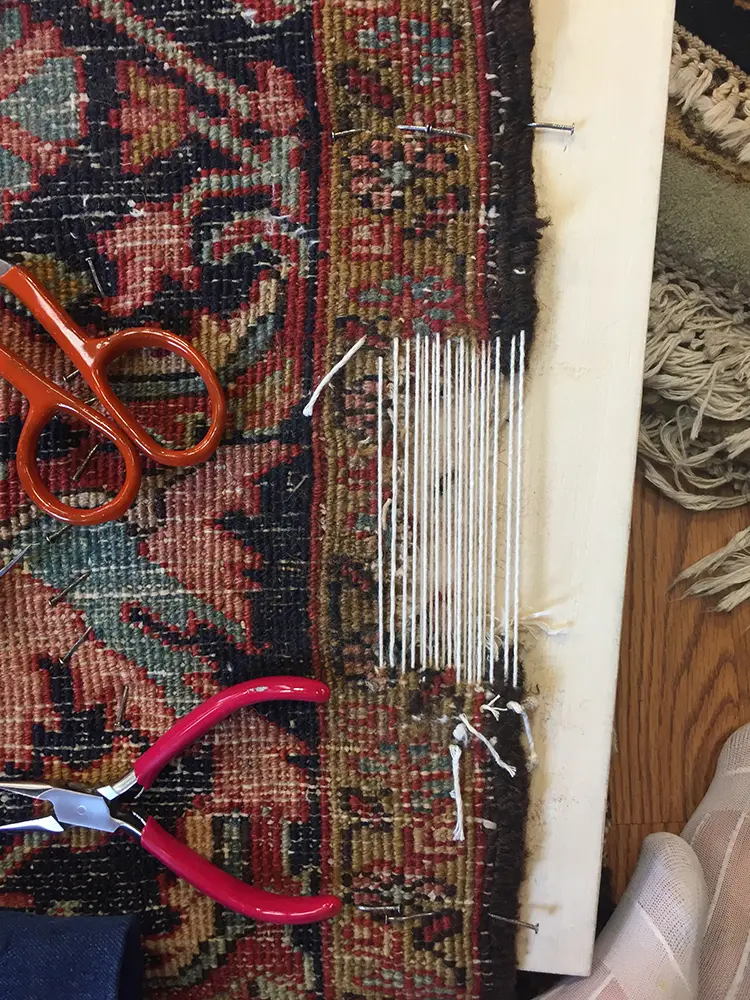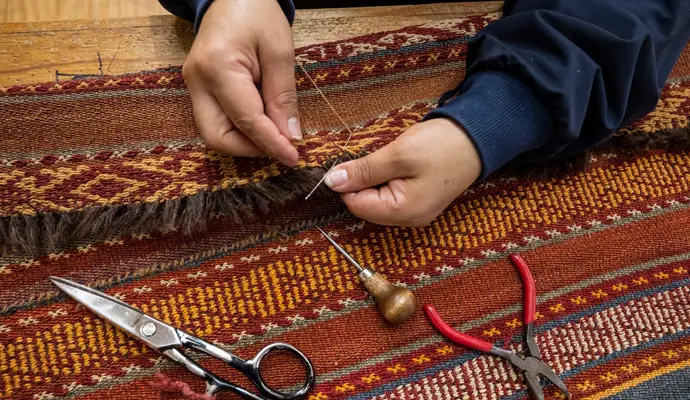Antique rugs are not just floor coverings; they are works of art that tell the stories of cultures and civilizations that have long passed. These textiles are beautiful and valuable, with some antique rugs fetching prices in the millions of dollars at auction. But with their age and delicate fibers comes the need for special care and attention to keep them in good condition.
In this blog, we will explore the world of antique rug repair, care and rug restoration. We will discuss the techniques and tools used to repair and restore these precious textiles and the best practices for maintaining them over time. Whether you are a collector of antique rugs, a textile dealer, or simply someone who appreciates the beauty and history of these unique creations, this blog is for you. So let’s dive in and learn how to care for and preserve these treasured textiles for generations.
Repairing Antique Rugs: The Dos and Don’ts
Antique rugs are valuable pieces of art that require special care and attention. When repairing antique rugs, sure dos and don’ts must be followed to ensure the repairs are done correctly and without causing further damage.
Firstly, it is essential to identify the type of antique rug and understand its unique characteristics. Different rugs require different repair techniques, and using the wrong approach can lead to further damage. For example, a Persian rug may need another antique rug repair method than a Turkish rug due to differences in how they are woven.
Secondly, choosing suitable materials and tools for the repair is crucial. It’s essential to use materials that match the original fibers and colors of the rug and appropriate tools for the specific repair technique. Using the wrong materials or tools can cause further damage and reduce the rug’s value.

Thirdly, understanding the different types of repair techniques is essential. Reweaving, patching, and knotting are the most common techniques in antique rug repair. Knowing when to use each method and how to execute it properly is key to successful repair.
Finally, it is essential to take care when handling and transporting antique rugs. Antique rugs are delicate, and rough handling can cause further or even irreversible damage. It is also essential to use a professional restorer if needed, as attempting repairs with the proper skills and experience can prevent further damage and reduce the rug’s value. By following these dos and don’ts of antique rug repair, you can help ensure that your valuable textile is properly repaired and maintained for years.
A Close-Up Look at Antique Rug Repair and Weaving
Antique rugs are intricate and beautiful textiles that require much skill and expertise to weave and repair. The process of antique rug weaving involves a highly specialized set of skills, as well as a deep knowledge of the materials and techniques involved. Similarly, antique rug repair requires close attention to detail, a strong understanding of the weaving techniques used in the original rug, and the ability to match the fibers and colors of the original textile.
When examining the process of antique rug weaving, it becomes clear just how intricate and complex this art form can be. Weavers may use various techniques, such as knotting, looping, and flat weaving, to create the patterns and textures characteristic of antique rugs. These techniques can involve using different yarns, fibers, and dyes. They may require much trial and error to achieve the desired effect.
When it comes to antique rug repair, a close-up look at the process can reveal just how skilled and meticulous a restorer must be. Antique rug repair techniques can vary depending on the type of damage to the rug and may involve reweaving, patching, or knotting. The restorer must carefully match the fibers and colors of the original textile, using specialized tools and materials to achieve a seamless repair.
One of the most challenging aspects of antique rug repair is ensuring that the repaired area matches the surrounding rug. This requires a deep knowledge of weaving techniques and an eye for color and design. A skilled Persian rug restorer must be able to recreate the original pattern and texture of the rug, even when repairing small areas of damage.
In conclusion, a close-up look at antique rug weaving and repair reveals the skill, expertise, and artistry involved in these intricate textiles. Whether weaving a new rug or repairing an antique one, weavers and restorers must possess a deep knowledge of the materials, techniques, and designs involved, as well as a strong attention to detail and a commitment to preserving the beauty and integrity of these valuable works of art.
Tips and Techniques for Antique Rug Repair
Antique rugs are often family heirlooms or valuable collector’s items, and antique rug repair requires high skill and expertise. However, with the right tips and techniques, repairing antique rugs and restoring them to their former glory is possible.
The first tip for repairing antique rugs is to assess the damage thoroughly. Take a close look at the carpet to determine the extent of the damage, including any holes, tears, or areas of discoloration. It is also essential to identify the type of rug and the materials used in its construction, as this will influence the repair techniques used.
Once you have assessed the damage, the next step is to gather the appropriate materials and tools. Depending on the type of damage, you may need to use different kinds of thread, needles, and other supplies. It is essential to use high-quality materials that will not damage the rug further and to use tools appropriate for the delicate nature of antique rugs.
When repairing an antique rug, it is crucial to match the materials and colors of the original rug as closely as possible. This requires a keen eye for color and texture and an understanding of the weaving techniques used in the original rug. Matching the colors and materials will ensure the repaired area blends seamlessly with the rest of the rug.
Another important technique for repairing antique rugs is to use the appropriate antique rug repair method for the type of damage. Standard repair techniques for antique rugs include reweaving, patching, and knotting. Each process requires a different set of skills and materials, so selecting the proper technique for the specific type of damage is important.
In conclusion, repairing antique rugs requires great skill and expertise. Still, with the right tips and techniques, restoring these valuable textiles to their former beauty is possible. By thoroughly assessing the damage, gathering the appropriate materials and tools, matching the colors and materials carefully, and using the proper repair technique, you can repair your antique rug and preserve it for future generations.
Final Thoughts
In the end, repairing an antique rug requires patience, attention to detail, and a deep respect for rug weaving. Whether you repair the rug yourself or entrust it to a professional, taking the time to repair an antique rug is a worthwhile investment. By preserving these valuable textiles, we honor the craftsmanship of the weavers who created them and keep a piece of history alive for future generations to appreciate. With the tips and techniques outlined in this blog post, you can confidently approach antique rug repair and restore your precious textile to its former glory.



